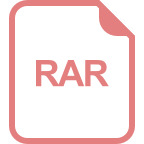
IEEE Communications Magazine • August 2008
58
0163-6804/08/$25.00 © 2008 IEEE
INTRODUCTION
This article describes the design and develop-
ment of a portable software radio prototype that
uses as much open source hardware and soft-
ware as possible, and leverages commercial off-
the-shelf (COTS) components. The device is
shown in Fig. 1, and operates using GNU Radio
software [1] for signal processing on a small-
form-factor general-purpose processor (GPP)-
based computer and an Ettus Universal Software
Radio Peripheral (USRP) [2] for the air inter-
face. The prototype offers the same capabilities
as GNU Radio running on an Intel Core 2 Duo
CPU-based computer running at 2 GHz with an
Ettus USRP attached. The device can fit inside a
box of dimensions 29 × 10.5 × 21 cm, weighs just
under seven pounds, and has roughly two hours
of runtime from a single battery charge. The bill
of materials for construction of a single device
using retail components comes to about $3700.
The prototype described here exemplifies the
benefits and cost savings offered by leveraging
open source and COTS components, and to the
best of our knowledge represents the first
portable software radio of its kind.
The functionality of traditional hardware-
based radios is limited to the capabilities pre-
sent in the initial design (e.g., broadcast AM
reception or analog cell phone communica-
tions). Such devices cannot be reconfigured in
any significant capacity (e.g., as an FM radio or
with digital cell phone service). An emerging
architecture generally referred to as software
radio shifts much of the signal processing into
software and reprogrammable hardware,
enabling devices that can be reconfigured after
deployment — including augmenting their func-
tionality. In this article we use the term software
radio to refer to all types of radios that are sub-
stantially defined in software and can signifi-
cantly alter their physical layer behavior through
changes to their software [3].
The concept of a software radio is credited to
Dr. Joseph Mitola III in the early 1990s [4], and
refers to a class of radios that can be repro-
grammed and thus reconfigured via software.
The first working software radio, called
SPEAKeasy [5], was developed for the U.S.
Army between 1992 and1995, but the software
was not portable beyond the hardware for which
it was developed, and the overall system filled up
the entire rear of a transport vehicle. The first
open source software for radios is credited to
Dr. Vanu Bose in his 1999 dissertation at the
Massachusetts Institute of Technology (MIT)[6].
Dr. Bose was a member of the SpectrumWare
project at MIT, which developed the original
Pspectra code described in his dissertation. This
code led to both the Vanu Software Radio [7] —
an industrial product for cellular base stations,
and the first FCC-approved software radio [8] —
as well as the GNU Radio open source project.
Software radio has found uses in amateur
radio, academia, industry, government, and mili-
tary applications. In communications research
laboratories, software radio is being used for
testing and evaluation of multihop and mobile
multimedia broadcast transmissions, wireless
network experimentation and cross-layer proto-
typing, and so-called cognitive radio research
and development. Software radio has also been
used for data acquisition in fields including mag-
ABSTRACT
We summarize the design and development
of a portable software radio prototype built pri-
marily using commercial off-the-shelf compo-
nents and open source software. Our research
group leverages these prototypes for several
funded projects focusing on issues including
interoperable public safety communications, cog-
nitive wireless networks, and educational initia-
tives. The device components include a
general-purpose processor on a small-form-fac-
tor motherboard, radio hardware, touchscreen
and LCD, audio microphone and speaker, and
an internal battery enabling hours of mobile
operation. We describe the selection of hard-
ware and software components, identification
and modification of the operating system, and
development of an application programming
framework that augments the selected radio
software. We discuss trade-offs in the selection
of hardware and software, decisions that proved
to be stable throughout the lifetime of the pro-
ject, issues that arose, and lessons learned along
the way. Significant advances over the past
decade have made GPP-based software radio a
viable solution in many areas, and this work
demonstrates that today’s processors are capable
of enabling a new generation of software radio
in portable form factor devices.
TOPICS IN DESIGN AND IMPLEMENTATION
Michael L. Dickens, Brian P. Dunn, and J. Nicholas Laneman, University of Notre Dame
Design and Implementation of a
Portable Software Radio
DUNN LAYOUT 7/21/08 2:44 PM Page 58



















